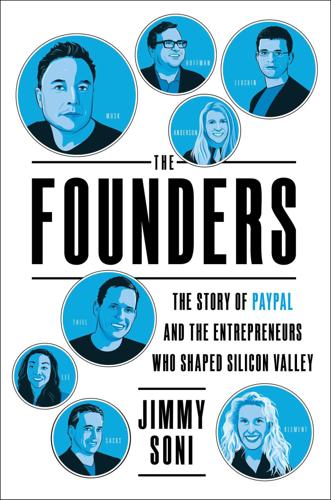
The Founders: The Story of Paypal and the Entrepreneurs Who Shaped Silicon Valley
by
Jimmy Soni
Published 22 Feb 2022
Despite divergent approaches to financial technology, the companies’ CEOs shared an obsession: getting noticed. Just as Musk courted media attention for X.com, Thiel made generating headlines a top priority. He had just closed Confinity’s investment deal with Nokia Ventures, and he wanted a big, splashy event to trumpet the deal—and demo the team’s breakthrough beaming technology. The team chose Buck’s of Woodside for the event. Buck’s—whose kitschy decor included porcelain cowboy boots, an authentic Russian cosmonaut suit, and a scaled-down Statue of Liberty—earned frequent visits from the technology set—and a storied place in tech lore. Buck’s was one of the first US restaurants with public WiFi, and Hotmail was reportedly incorporated at one of its tables.
…
If you have used the internet at all in the last twenty years, you’ve touched a product, service, or website connected to the creators of PayPal. The founders of several of our era’s defining firms—the creators of YouTube, Yelp, Tesla, SpaceX, LinkedIn, and Palantir, among others—were early PayPal employees; others occupy top posts at Google, Facebook, and Silicon Valley’s leading venture capital firms. Both in the foreground and behind the scenes, PayPal’s alumni have built, funded, or counseled nearly every Silicon Valley company of consequence for the last two decades. As a group, they constitute one of the most powerful and successful networks ever created—power and influence captured in the controversial phrase the “PayPal Mafia.” Several billionaires and many multimillionaires have emerged from PayPal’s ranks; the group’s combined net worth is higher than the GDP of New Zealand.
…
Later, Thiel would call the cataclysm clarifying. “Perhaps the peak of insanity was also the peak of clarity,” he recalled, “where in some sense you saw very clearly what the distant future was going to be, even though it turned out that a lot of specific things went very wrong.” Suddenly, Silicon Valley’s excess curdled into austerity. “All the other companies in Silicon Valley that had waited to close their funding rounds, for whatever reason, the money just dried up—instantly,” Sacks remembered, snapping his fingers. Members of the team remembered the shock of seeing once-busy Palo Alto storefronts now boarded up. Even high-profile support didn’t count for much once the correction began.
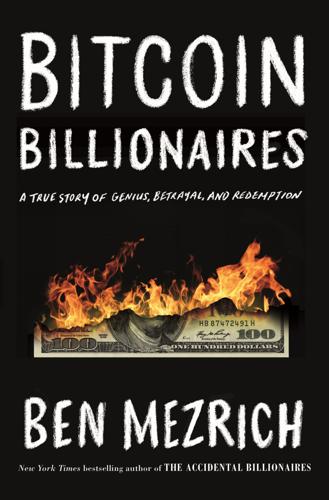
Bitcoin Billionaires: A True Story of Genius, Betrayal, and Redemption
by
Ben Mezrich
Published 20 May 2019
The organism even had its brain: Stanford University, in Palo Alto, every year emitting dozens of brilliant young computer scientists and engineers like neurotransmitters moving along the neurons of the Valley’s nervous system, teaming up to leap across the various synapses in their paths. And, of course, it had its digestive system, the eateries, breakfast spots, and coffee shops where the Valley’s royalty congregated, sharing innovations over scrambled eggs, chai lattes, and french fries. The Oasis might not have been quite as famous as nearby Buck’s of Woodside, where PayPal was first demoed and a VC was once pitched something called Yahoo!, but the burger joint and beer garden around the corner from the original Facebook offices had played host to entrepreneurs, investors, and wide-eyed, bushy-tailed Valley dreamers for decades. Opened right after prohibition ended, the casual spot had become one of Cameron and Tyler’s favorite places for meetings.
…
Tyler asked. “Precisely. We’re the only people in Silicon Valley right now who care about crypto. I take it you guys haven’t been spending much time in the Valley lately.” It was very true. “The people in this room are mostly Silicon Valley outsiders anyway. They build the protocols and tools that power the internet, its plumbing. You could even call them the roadies of the internet.” Naval was right. While some of the faces here were known in deeper technology circles, and Tyler and Cameron recognized some of them, most were not the Silicon Valley “brands” that people across America knew, the billion-dollar unicorns who dominated the West Coast tech scene.
…
They needed to go back to the arena where it had all started and begin to fight all over again. 3 DAMAGED GOODS Four weeks later, Cameron’s thoughts were moving at a thousand rpms as he stepped out of the taxi that had taken them straight to the heart of Silicon Valley from SFO. It was “a thirty-minute ride” that never took less than an hour but was at least pretty pleasant if you took the 280 instead of the crapshoot that was the 101. Then again, Cameron had barely noticed the scenery as he sat next to his brother in the back of the cab, going through the heavy folder of company pitch decks they’d brought with them from New York City. After hanging up their oars and officially retiring from U.S. Olympic Crew, they’d dived headlong back into the high-tech entrepreneurial scene that was centered in Silicon Valley. But unlike Zuckerberg years earlier, they hadn’t moved west.
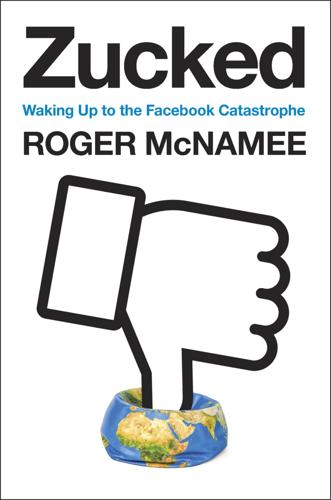
Zucked: Waking Up to the Facebook Catastrophe
by
Roger McNamee
Published 1 Jan 2019
Let me extend thanks and appreciation to the team that created the Center for Humane Technology: Tristan Harris, Renée DiResta, Lynn Fox, Sandy Parakilas, Tavis McGinn, Randima Fernando, Aza Raskin, Max Stossel, Guillaume Chaslot, Cathy O’Neil, Cailleach Dé Weingart-Ryan, Pam Miller, and Sam Perry. Your energy and commitment never cease to inspire me. Special thanks to Judy Estrin, who, for the better part of a year, has spent several hours a week helping me organize the ideas at the foundation of this book. Buck’s of Woodside provided the setting for every one of those meetings, once again playing its role as a place where ideas become real. Thank you to Jamis MacNiven, proprietor. Sheepish thanks go to two dear friends—Paul Kranhold and Lindsay Andrews—who fielded dozens of press contacts without compensation in late 2017 and early 2018 because I had forgotten to take their contact information off the Elevation website when the fund completed its successful journey.
…
There are several good books about the culture in Silicon Valley. A good place to start is Brotopia: Breaking Up the Boys’ Club of Silicon Valley, by Emily Chang (New York: Portfolio, 2018). Chang is the host of Bloomberg Technology, the show on which I interviewed Tristan in April 2017, after his appearance on 60 Minutes. (Emily was on maternity leave that day!) The domination of Silicon Valley by young Asian and Caucasian men seems foundational to the culture that built Facebook, YouTube, and the others. Chang cuts to the heart of the matter. Chaos Monkeys: Obscene Fortune and Random Failure in Silicon Valley, by Antonio García Martínez (New York: Harper, 2016), is the inside story of an engineer who started a company, ran out of money, got a gig in advertising technology at Facebook, and was there during the formative years of the business practices that enabled Cambridge Analytica.
…
The libertarian era that began just after 2000 transformed the value system, culture, and business models of Silicon Valley, enabling Google, Facebook, and Amazon to create unprecedented wealth by dominating the public square on a global basis. I liked the Apollo and hippie eras because their idealism was genuine, even when it was misdirected. There are some excellent books that will unlock the mysteries of Silicon Valley’s early and middle days. Please read them! A good place to start is with semiconductors, the original business of Silicon Valley. I recommend The Man Behind the Microchip: Robert Noyce and the Invention of Silicon Valley, by Leslie Berlin (New York: Oxford University Press, 2005).
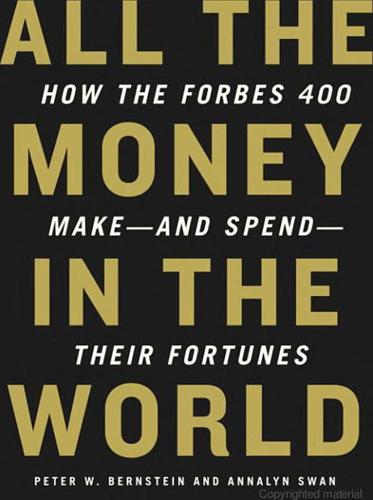
All the Money in the World
by
Peter W. Bernstein
Published 17 Dec 2008
The modest town center, which can be accessed by a bridle path, consists of nothing more than a couple of cafés and a grocery store with a billboard of feathered flyers advertising events such as an upcoming arts-and-crafts fair and pony club outings. Not for Woodside the Manhattan power breakfast: Tech tycoons and venture capitalists such as John Doerr frequent Buck’s of Woodside, a funky diner on Woodside Road with kitschy art plastered over the walls and hanging from the ceiling. Even though the latest model sports cars and SUVs are parked outside the restaurant, most of the breakfast entrées are under $10. But although Woodside prides itself on its woodsy rural character, there is no doubt that this is a place where money matters.
…
The Valley’s relatively contained geography: AnnaLee Saxenian, Regional Advantage: Culture and Competition in Silicon Valley and Route 128 (Cambridge, Mass.: Harvard University Press, 1994), p. 29. 21. “From the outset”: Ibid. Much of the information on the history of Silicon Valley comes from Saxenian’s book. 22. They had become friends: Kaplan, The Silicon Boys, p. 34. 23. Later he encouraged the duo: Saxenian, Regional Advantage, p. 20. 24. Hewlett and Packard are the iconic models: The information on Hewlett and Packard’s early days in Silicon Valley comes mainly from John Markoff, “William Hewlett Dies at 87: A Pioneer of Silicon Valley,” obituary, New York Times, Jan. 13, 2001. 25.
…
* * * At Home in Woodside Once they make their fortunes, many of the most successful Silicon Valley entrepreneurs head to the historic Silicon Valley town of Woodside. A community of about five thousand people, Woodside is a place of bucolic, two-lane country roads lined with old-fashioned, horseshoe-shaped mailboxes. Looking around, it is difficult to imagine that this town is, in fact, one of the wealthiest in the nation. Although the primary residences of Larry Ellison and Steve Jobs are in nearby Silicon Valley communities, both of which are not more than a twenty-minute drive away, they also maintain estates in Woodside, a town where a billionaire can buy some privacy.
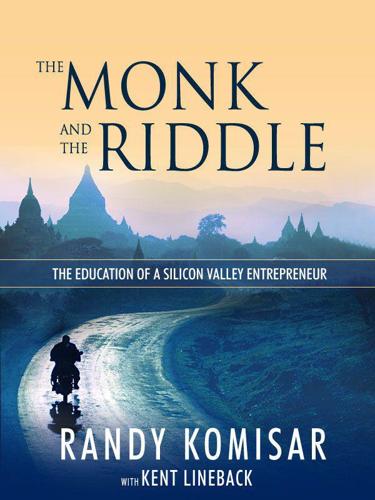
The Monk and the Riddle: The Education of a Silicon Valley Entrepreneur
by
Randy Komisar
Published 15 Mar 2000
We are seated in the Konditorei, a comfy coffee shop nestled in bucolic Portola Valley. With the Santa Cruz Mountains to the west and Palo Alto and Route 280 to the east, we are but one exit away from Sand Hill Road, the famous home to Silicon Valley venture capital. The Konditorei is where I meet people like Lenny, the pitchmen of the Internet era. Here, or in a couple of restaurants in the same rustic strip mall. This is my office. (Forget Buck's Restaurant in next-door Woodside. That's where venture capitalists prefer to meet supplicants and huddle around deals under a giant painting of Roy Rogers on Trigger rampant. If you sit in the corner of Buck's all morning, starting with the power breakfast crowd, you can quietly observe who is funding whom.
…
Or, perhaps in the case of Jack Dolan, as Lenny saw him, work, then retireassuming you live long enough to retireand then devote your time to your passion. The Deferred Life Plan certainly dominates Silicon Valley. Most people think getting rich fast provides the quickest way to get past the first stepand where can you get rich faster than Silicon Valley? The problem is that, despite the undisguised affluence, the verdant hills, and media-generated mythos, the vast majority of people in Silicon Valley will not get rich. Most business ideas do not find funding. Even the majority of those that are fundedthat is, vetted by very smart people who think enough of the ideas to invest in themultimately fail.
…
So we'll use the dead tree version." Here it comes. The pitch. People present ideas for new businesses to me two or three times a week. If I chose to, I could hear a pitch every dayall day, every day. Just as everyone in L.A. has a screenplay, everyone in Silicon Valley has a business planmost of them nowadays for Internet businesses. I've been around Silicon Valley and involved with young companies since the early '80sstartups, spinouts, spin-ins, what have you. I'm not in the phone book or listed in any professional directory. If you don't know someone I know, you can't find me. I wonder what Frank had in mind when he set me up with Lenny.
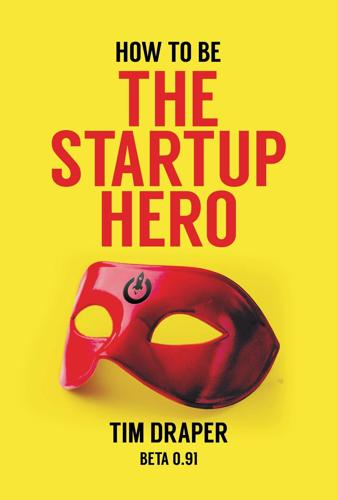
How to Be the Startup Hero: A Guide and Textbook for Entrepreneurs and Aspiring Entrepreneurs
by
Tim Draper
Published 18 Dec 2017
After my speech, the first question I got was, “What do you recommend we people of Detroit do to get the kind of prosperity we hear about from the Silicon Valley?” I answered, “Well, you have been living off the automotive teat for more than three generations. That is long enough! I recommend that you do something else.” Then she followed up with, “But if we want to stay in automotive, what then?” I said, “Well, you have lost the electric car game to Tesla, so you better make ‘em fly.” The press took that message to the car companies, and the quotes I saw from the CEOs of the Big Three were understandably a little angry. Two of them went on the attack, saying in effect, “Who is this jerk from the Silicon Valley coming to Detroit to tell us how the auto industry should work?”
…
I put a team together with local Anchorage real estate businessman Jim Yarmon and fellow Harvard Business School alum Jim Lynch. The three of us agreed to put half the money in Alaska, and half in Silicon Valley. We called the fund Polaris Fund to give it local appeal, and we were off to the races. We made it work, funding a bone-stretching technology company (seemed painful, but it grew people’s bones), a low-Earth orbit satellite company, and the fish head splitter company as well as a few great Silicon Valley companies. It took a few years, but we ended up returning the $6 million to AIDEA and much more. Burt can now rest easy knowing that the money was well invested.
…
I decided to fix California’s problem by creating a new entrepreneurial state. I wanted to offer a small group of counties the option to join a new state, called the state of Silicon Valley. My plan was to later offer the other California counties the option to join the new state, forcing California to become accountable and compete to keep its counties. But in my discussions with various economic and political experts, I determined that it would be unfair to all the other states for Silicon Valley to be able to create a new state when the rest of the Californians could not, and that for only twice the cost, I could allow Californians to dissolve the existing single government and create six new ones in its place.
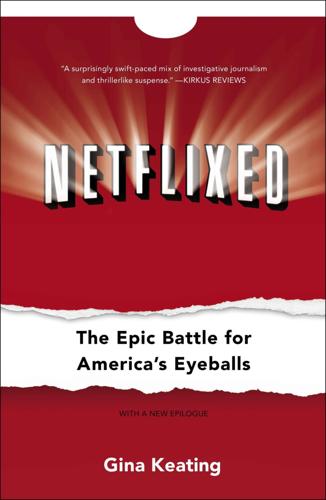
Netflixed: The Epic Battle for America's Eyeballs
by
Gina Keating
Published 10 Oct 2012
It was a common dance in 1990s Silicon Valley, a verdant and sunny groove of flat land sandwiched between the southern reaches of the San Francisco Bay in the east and the Santa Cruz Mountains in the west. Start-ups bloomed for a year or so, watered by plentiful venture capital dollars, and were quickly swallowed up by private investors or large, rich companies fishing for the next big innovation in software, biomedical engineering, telecoms, or the ever-evolving Internet. It was the new gold rush, and venture capital investors would pour more than $70 billion into Silicon Valley start-ups before the decade was out.
…
By mid-1999, the company’s head count had been pushed past one hundred, and—with McCord having trouble convincing programmers to drive over the hill to work in Scotts Valley—Netflix went looking for bigger digs closer to the heart of Silicon Valley. In a final capitulation, Randolph gave up his dream of working almost within walking distance of his home and moved the operation into a nondescript, low-slung building on University Avenue in Los Gatos, the southernmost town in Silicon Valley. The other members of the founding team saw Randolph being pushed aside with mixed feelings. They had poured their energy and creativity into Netflix at a fraction of their usual salaries for two years to bring their dream company to life, and they wanted to see it succeed.
…
“Netflix Is Moving to Get Big Fast; Overnight Service Firm’s Aiming for Profit and a Million Subscribers in Second Quarter of ’03.” Investor’s Business Daily, July 2, 2002. Simon, Mark. “Widespread Success for TechNet: Silicon Valley Political Action Group Is a Big Hit.” San Francisco Chronicle, July 16, 1998. ———. “Political Action Chief Steps Down: Reed Hastings Will Stay Active in Silicon Valley Group.” San Francisco Chronicle, Jan. 12, 1999. Sinton, Peter. “Start-ups Fetch Record Financing.” San Francisco Chronicle, Aug. 11, 1999. Spector, Mike. “Icahn Takes Blockbuster Debt Holding.” Wall Street Journal, Sept. 17, 2010.

Valley of Genius: The Uncensored History of Silicon Valley (As Told by the Hackers, Founders, and Freaks Who Made It Boom)
by
Adam Fisher
Published 9 Jul 2018
The first surprise was the range of types of people whom I encountered. Silicon Valley grew from a few suburban towns to encompass the cities around it, and that growth was fueled by a rather remarkable diversity. There’s no Silicon Valley ethnic type, per se. Silicon Valley is racially diverse—it is the proverbial melting pot—although it’s also true that black people are still far and few between. Women are also underrepresented, although there are many more than one might imagine. And there’s no typical age, either. Silicon Valley focuses on its young—that’s where the new ideas usually come from—but it’s also been around for a long time.
…
It’s pretty clear where this new nerd culture came from—it came from the same place that the money did: Silicon Valley. And what is a culture? There’s no mystery there, either. A culture is simply the stories that define a people, a place. It’s the stories we tell each other to make sense of ourselves, where we came from, and where we are going. And here those stories are, between two covers. Together they comprise an oral history of Silicon Valley. Adam Fisher Alameda, California June 2018 Silicon Valley, Explained The story of the past, as told by the people of the future Silicon Valley is a seemingly ordinary place: a suburban idyll surrounded by a few relatively small cities.
…
Bye-bye. I’m going out to Silicon Valley.” That was ’98. Ali Aydar: It was the dot-com boom, and I’m in Chicago languishing away at a bank, and I have a degree in computer science from Carnegie Mellon. Why am I at a bank in Chicago? I need to be in Silicon Valley, I need to be in the dot-com boom, and be taking advantage of it in some way. So I came out to Silicon Valley in August of 1999. Jordan Ritter: I was a paid hacker. I lived in downtown Boston, which was the center of hacking in the United States at the time: It wasn’t New York, it wasn’t LA, it wasn’t even Silicon Valley. Boston was the seat of it, and I was in the middle of that.
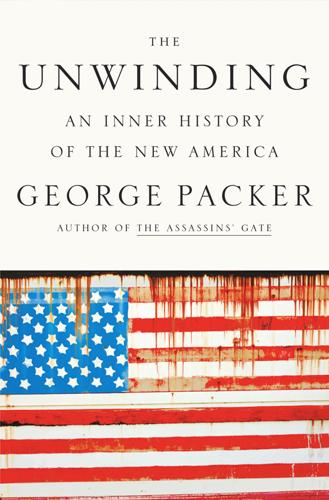
The Unwinding: An Inner History of the New America
by
George Packer
Published 4 Mar 2014
FOR LAURA, CHARLIE, AND JULIA CONTENTS Title Page Copyright Notice Dedication Prologue PART I 1978 Dean Price Total War: Newt Gingrich Jeff Connaughton 1984 Tammy Thomas Her Own: Oprah Winfrey Jeff Connaughton 1987 Craftsman: Raymond Carver Dean Price Tammy Thomas Mr. Sam: Sam Walton 1994 Jeff Connaughton Silicon Valley 1999 Dean Price Tammy Thomas 2003 Institution Man (1): Colin Powell Jeff Connaughton PART II Dean Price Radish Queen: Alice Waters Tampa Silicon Valley 2008 Institution Man (2): Robert Rubin Jeff Connaughton Tammy Thomas Dean Price Just Business: Jay-Z Tampa PART III Jeff Connaughton 2010 Citizen Journalist: Andrew Breitbart Tampa Dean Price Tammy Thomas Tampa Prairie Populist: Elizabeth Warren Wall Street 2012 Silicon Valley Jeff Connaughton Tampa Tammy Thomas Dean Price Note A Note on Sources Acknowledgments Also by George Packer A Note About the Author Copyright PROLOGUE No one can say when the unwinding began—when the coil that held Americans together in its secure and sometimes stifling grip first gave way.
…
I didn’t want to work with frenemies, I wanted to work with friends. In Silicon Valley it seemed possible, because there was no sort of internal structure where people were competing for diminishing resources.” Unlike New York, Silicon Valley wasn’t a zero-sum game. It took two more years. In the summer of 1998, Thiel gave a guest lecture at Stanford on currency trading. It was a hot day and around six people showed up. One of them was a twenty-three-year-old Ukrainian-born computer programmer named Max Levchin. Just out of the University of Illinois, he had come to Silicon Valley that summer with a vague notion of starting a company, sleeping on friends’ floors—on the day of the lecture he was looking for an air-conditioned room to cool off in.
…
The roommate was thirty-one years old, three years older than Thiel, and he ran out of money. He had to call his dad for a loan. That was when Thiel left New York and moved back to Silicon Valley for good. * * * The Valley was no longer the place Thiel had left four years earlier. What had happened in the meantime was the Internet. Between the midseventies and the early nineties, the personal computer had spawned countless hardware and software companies in Silicon Valley, and in other high-tech centers around the country; during the seventies and eighties the population of San Jose doubled, approaching a million, and by 1994 there were 315 public companies in the Valley.

Smart Mobs: The Next Social Revolution
by
Howard Rheingold
Published 24 Dec 2011
Napster is probably the most well known example of a p2p arrangement for sharing the contents of individual participants’ disks—challenging traditional notions of intellectual property and the existing commercial music industry in one stroke. Peer-to-Peer Power The story of the “killer app”—the software application that turns an underused technology into an industry—is a central and recurring myth of Silicon Valley culture. The PC was a toy for geeks and gamers until the electronic spreadsheet transformed it into a business tool.18 Email and the Web were the killer apps of the Internet. And Napster was the killer app that awoke the world to the disruptive potential of p2p power. When millions of college students started trading music files in the new MP3 digital recording format, they strained the carrying capacity of large-scale university Internet connections, alerted the vested interests in the existing intellectual property industry that a frontal assault had been launched on their livelihood, and demonstrated that teenagers can ignite world-changing p2p ad-hocracies.
…
When I started investigating the combination of mobile communication and pervasive computing, it didn’t take long to discover the R&D hotspots; they are always the places where the authors of the most interesting papers work. I began to believe that a new technological infrastructure really is in the process of emerging when I saw how IBM, Hewlett-Packard (HP), Nokia, Ericsson, Sony, and DoCoMo conduct similar R&D. From Al-maden, the trail led to Silicon Valley’s Cooltown, Helsinki’s Virtual Village, Stockholm’s HotTown, and a couple of labs in Tokyo. CoolTown, HP’s pervasive computing effort, is built around the Web as the universal medium for linking physical and virtual worlds. CoolTown is in the same building where Bill Hewlett and David Packard’s offices are enshrined as they left them.
…
The lawn as floor and sky as ceiling definitely improve my life—and you don’t find me contributing to rush hour traffic. I agree with Winner that infogadgetry has made possible a way of life that seems the very opposite of pastoral knowledge work, whereby telecommuters log in from their electronic cottages. Winner cited an anthropological study of Silicon Valley culture that concentrated on 450 people who “employ complex ecologies of electronic devices—cell phones, beepers, laptops, personal digital assistants, voice mail, personal Web pages,” noting: Preliminary findings reveal a world in which work has become everything, with electronic devices the glue that holds it all together.
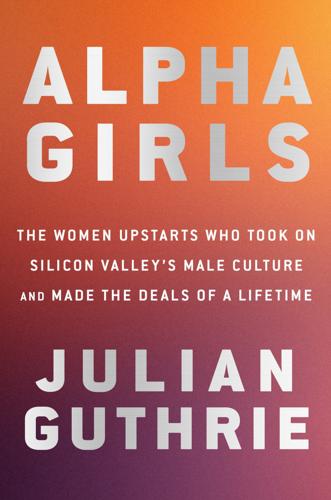
Alpha Girls: The Women Upstarts Who Took on Silicon Valley's Male Culture and Made the Deals of a Lifetime
by
Julian Guthrie
Published 15 Nov 2019
Men who behaved badly were being put on notice, and many firms in Silicon Valley were hiring more women as principals and partners. That marked progress. But the real work, the heavy lifting, was more challenging. It was the deeper problem of bias. MJ knew that the “bro culture,” and stories of sexual harassment in Silicon Valley, were an everyday reality, but she also knew that was not the entire story. She had worked with ethical partners at IVP and elsewhere who looked past gender and always treated her respectfully. She had found Silicon Valley an amazing place to work. She had blazed trails and built game-changing companies.
…
MORE ADVANCE PRAISE FOR ALPHA GIRLS “An intimate and addictive homage to the fearless female pioneers who made Silicon Valley blossom. Julian’s vivid portrayals of once-hidden risk takers and mavericks will leave you heartbroken, hopeful, and hungering for more.” —Brian Keating, professor of physics at the University of California, San Diego, and author of Losing the Nobel Prize “Finally, it’s here: a book about Silicon Valley as seen through the accomplishments of the powerful women who, against all odds, made their mark there. Alpha Girls offers an inside look at the true meaning of grit and drive and upends the myth that it is only men who create and build tech companies.
…
—Cathy Schulman, president of Welle Entertainment, Academy Award–winning producer, and women’s activist “Julian Guthrie is the best author writing about Silicon Valley today, and Alpha Girls is the book that the world needs right now. It’s the real story behind the largest legal creation of wealth in the history of the planet. If you are a woman who works, or simply work with women, Alpha Girls is essential reading.” —Adam Fisher, author of Valley of Genius: The Uncensored History of Silicon Valley (As Told by the Hackers, Founders, and Freaks Who Made It Boom) Copyright © 2019 by Julian Guthrie All rights reserved.

Coders: The Making of a New Tribe and the Remaking of the World
by
Clive Thompson
Published 26 Mar 2019
CHAPTER 6: 10X, ROCK STARS, AND THE MYTH OF MERITOCRACY a frenzy of programming: This section on Max Levchin draws from several sources, including Adam Penenberg, Viral Loop: From Facebook to Twitter: How Today’s Smartest Businesses Grow Themselves (New York: Hyperion, 2009), 158–275, Kindle; Sarah Lacy, Once You’re Lucky, Twice You’re Good: The Rebirth of Silicon Valley and the Rise of Web 2.0 (New York: Penguin, 2008), 17–41, Kindle; Jessica Livingston, Founders at Work: Stories of Startups’ Early Days (New York: Apress, 2008), locations 200–605 of 12266, Kindle; Krissy Clark, “What Does Meritocracy Really Mean in Silicon Valley?,” Marketplace, October 4, 2013, accessed August 18, 2018, https://www.marketplace.org/2013/10/04/wealth-poverty/what-does-meritocracy-really-mean-silicon-valley; Peter Thiel and Blake Masters, Zero to One: Notes on Startups, or How to Build the Future (New York: Crown Publishing Group, 2014). “perfect validation of merit”: Emily Chang, Brotopia: Breaking Up the Boys’ Club of Silicon Valley (New York: Penguin, 2018), 60. “People wouldn’t talk to us”: Chang, Brotopia, 48. “it is in Silicon Valley”: Jodi Kantor, “A Brand New World in Which Men Ruled,” New York Times, December 23, 2014, accessed August 18, 2018, www.nytimes.com/interactive/2014/12/23/us/gender-gaps-stanford-94.html.
…
Ferenstein, and Neil Malhotra, “The Political Behavior of Wealthy Americans: Evidence from Technology Entrepreneurs,” Stanford Graduate School of Business, Working Paper No. 3581, December 9, 2017, accessed August 18, 2018, https://www.gsb.stanford.edu/faculty-research/working-papers/political-behavior-wealthy-americans-evidence-technology. than to Donald Trump: Ari Levy, “Silicon Valley Donated 60 Times More to Clinton Than to Trump,” CNBC, November 7, 2016, accessed August 18, 2018, https://www.nbcnews.com/storyline/2016-election-day/silicon-valley-donated-60-times-more-clinton-trump-n679156. philosopher and technologist Ian Bogost says: Alexis C. Madrigal, “What Should We Call Silicon Valley’s Unique Politics?,” The Atlantic, September 7, 2017, accessed August 18, 2018, https://www.theatlantic.com/technology/archive/2017/09/what-to-call-silicon-valleys-anti-regulation-pro-redistribution-politics/539043. civic goods like public libraries: Susan Stamberg, “How Andrew Carnegie Turned His Fortune into a Library Legacy,” NPR, August 1, 2013, accessed August 18, 2018, https://www.npr.org/2013/08/01/207272849/how-andrew-carnegie-turned-his-fortune-into-a-library-legacy.
…
Stanford, Harvard, or MIT: Sarah McBride, “Insight: In Silicon Valley Start-up World, Pedigree Counts,” Reuters, September 12, 2013, accessed August 18, 2018, https://www.reuters.com/article/us-usa-startup-connections-insight/insight-in-silicon-valley-start-up-world-pedigree-counts-idUSBRE98B15U20130912. cascade of good fortune downstream: Robert H. Frank and Philip J. Cook, The Winner-Take-All Society: Why the Few at the Top Get So Much More Than the Rest of Us (New York: Virgin Books, 2010). “you start acting like one”: Antonio García Martínez, Chaos Monkeys: Obscene Fortune and Random Failure in Silicon Valley (New York: HarperCollins, 2016), 490.
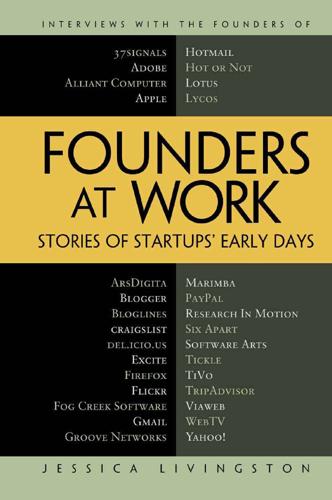
Founders at Work: Stories of Startups' Early Days
by
Jessica Livingston
Published 14 Aug 2008
My focus in college was security. I wanted to do crypto and stuff like that. I had already founded three different companies during college and the year after, which I spent in Champaign-Urbana, where I went to school. Then, in favor of not doing graduate school, I decided to move out to Silicon Valley and try to start another company. So I was hanging around Silicon Valley in the summer of ’98 and was not really sure what I was going to do with my life. I was living in Palo Alto, squatting 1 2 Founders at Work on the floor of a friend. I went to see this random lecture at Stanford—given by a guy named Peter, who I had heard about, but never met before.
…
Now we have to have two Demo Days just to accommodate all the people who want to come. Jessica Livingston 451 What happened after that first batch? Livingston: The biggest milestone for Y Combinator after the first summer batch was when we decided to move out to Silicon Valley for the winter. I remember not being too excited about that idea at first. Paul said, “You know, we should do this out in Silicon Valley,” and I thought, “Dammit, we just got everything set up, working well here in Cambridge. Do I really want to uproot my entire life and move out to California?” But it turned out to be one of the best things we’ve ever done. I think we decided to do it in October, so we had only 2 months to renovate part of Trevor’s Anybot’s office to make space for Y Combinator.
…
He designed the machine that crystallized what a desktop computer was: the Apple II. Wozniak and Steve Jobs founded Apple Computer in 1976. Between Wozniak’s technical ability and Jobs’s mesmerizing energy, they were a powerful team. Woz first showed off his home-built computer, the Apple I, at Silicon Valley’s Homebrew Computer Club in 1976. After Jobs landed a contract with the Byte Shop, a local computer store, for 100 preassembled machines, Apple was launched on a rapid ascent. Woz soon followed with the machine that made the company: the Apple II. He single-handedly designed all its hardware and software—an extraordinary feat even for the time.

Whole Earth: The Many Lives of Stewart Brand
by
John Markoff
Published 22 Mar 2022
The Portola Institute became an umbrella for a wide range of projects and would become Silicon Valley’s first “incubator.” Raymond pioneered the idea for nonprofits in the sixties, and as a result of his philosophy, the institute would have a significant impact. Both the Whole Earth Catalog and the Homebrew Computer Club, which gave rise to several dozen companies that forged the personal computer industry—including Apple—emerged from the fertile ground that Raymond created. He would also help pioneer the entrepreneurial culture that is still at the heart of Silicon Valley—where failure due to having taken risks is a badge of honor rather than shame.
…
Venice and Florence lit the spark that led to the Renaissance, and pre–World War I Vienna served as an extraordinary cultural and scientific hotbed for modernism. Silicon Valley, first named in 1971, has been a similar magnet for the forces that shape world history. Historians have paid attention both to William Hewlett and David Packard’s garage in Professorville and to William Shockley’s laboratory in Mountain View, but less attention has been paid to the extraordinary convergence of counterculture institutions in 1968 at what would soon become the northern boundary of Silicon Valley. It was not accidental that the Whole Earth Catalog emerged in the heart of this technology hothouse, shaped by the same forces and at exactly the same historical moment that birthed Silicon Valley.
…
Before going to New York, Kane had grown up in Silicon Valley, where in junior high school he had the distinction of punching a young Steve Jobs in the nose—and breaking it—when he found Jobs and another boy harassing his brother in the schoolyard. Kane had arrived at the Quarterly in the early 1980s and had taken over a regular column in the San Francisco Chronicle that Brand had recently begun before quickly deciding it wasn’t his cup of tea. Brand could be a compelling writer, but he was never able to master the art form of the weekly eight-hundred-word essay. Despite Kane’s Silicon Valley roots, he had little interest in the personal computer cultural explosion that was beginning to transform workplaces everywhere.
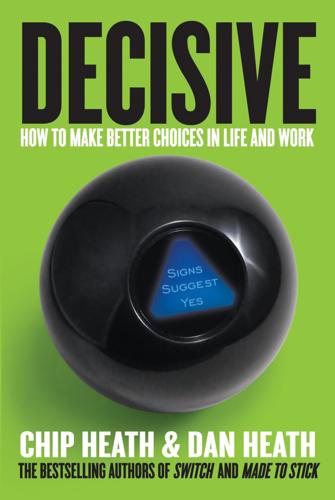
Decisive: How to Make Better Choices in Life and Work
by
Chip Heath
and
Dan Heath
Published 26 Mar 2013
So, given the clear benefits of multitracking, what explains the failure of most organizations to embrace it? Many executives are worried that exploring multiple options will take too long. It’s a reasonable fear, but the researcher Kathleen Eisenhardt has found that the opposite is true. In a study of top leadership teams in Silicon Valley, an environment that tends to place a premium on speed, she found that executives who weigh more options actually make faster decisions. It’s a counterintuitive finding, but Eisenhardt offers three explanations. First, comparing alternatives helps executives to understand the “landscape”: what’s possible and what’s not, what variables are involved.
…
When you consider multiple options simultaneously, you learn the “shape” of the problem. • When designers created ads simultaneously, they scored higher on creativity and effectiveness. 3. Multitracking also keeps egos in check—and can actually be faster! • When you develop only one option, your ego is tied up in it. • Eisenhardt’s research on Silicon Valley firms: Multitracking minimized politics and provided a built-in fallback plan. 4. While decision paralysis may be a concern for people who consider many options, we’re pushing for only one or two extra. And the payoff can be huge. • We’re not advocating 24 kinds of jam. When the German firm considered two or more alternatives, it made six times as many “very good” decisions. 5.
…
Levchin and his cofounder, Peter Thiel, brainstormed about ways to turn Levchin’s innovations into a commercial product, and eventually they hit upon the idea of developing software that allowed people to store money on their PalmPilots and exchange it wirelessly. Financial transactions clearly needed the kind of security that Levchin’s code provided. When Thiel and Levchin began to talk up their idea, their peers in Silicon Valley loved it. Levchin said, in an interview with Jessica Livingston in her book Founders at Work, “The geek crowd was like, ‘Wow. This is the future. We want to go to the future. Take us there.’ So we got all this attention and were able to raise funding on that story.” In fact, the funding event itself became a story.
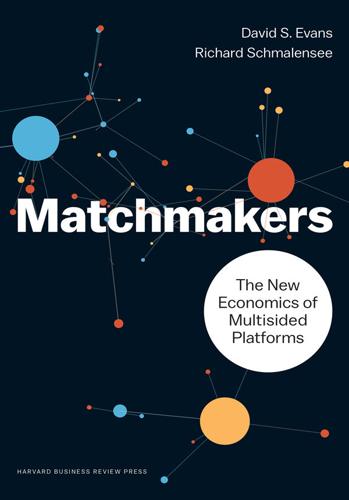
Matchmakers: The New Economics of Multisided Platforms
by
David S. Evans
and
Richard Schmalensee
Published 23 May 2016
OpenTable’s Quest for Critical Mass After his wife’s frustrating morning, Chuck Templeton figured there had to be a better way to get people and restaurants together. In October 1998, at age twenty-nine, two months after getting married, he quit his job to do just that. Like many others that year in Silicon Valley, he started a dot-com and quickly got funded. OpenTable was ready to rock.6 Droves of consumers were coming online. Chuck thought at first that he just needed a website to which they could connect. The rest would be easy. Except, as he soon discovered, most restaurants didn’t even have a computer, much less Internet connectivity at the host stand, where they managed reservations.
…
By the time entrepreneurs were starting dot-coms in the mid-1990s, there was an extensive academic literature. Business writers had latched onto the concept. Simple versions of network effects seeped into popular writings along with simplistic strategic advice. Unfortunately, right around the time dot-commers in Silicon Valley were being told they should build market share as quickly as possible, Rochet and Tirole in Toulouse were realizing that network effects were much more complicated, and different in practice, than many economists had thought. The early work by economists on network effects nevertheless laid the foundations for the later research on multisided platforms.3 So it is worth spending some time describing the older research before we explain what went wrong when people started applying a simple theory with just one kind of customer to a complex multisided world with several different kinds of customers.
…
Early in 2005, Apple and Google—two of the companies with the most at stake—set out to reduce the frictions that made “the software industry for mobile phones … one of the most dysfunctional in all technology.”3 Their efforts serve as a good illustration of how businesses design platforms and then nurture ecosystems in which those platforms can thrive. There isn’t a single best way to do this. In fact, these two tech giants succeeded with very different approaches. But each company applied the same general principles, and that’s where we start before showing how the two of them, based nine miles apart in Silicon Valley, got their mobile operating systems on almost every smartphone in the world. Creating Healthy Ecosystems Multisided platforms are seldom self-sufficient fiefdoms where everything that’s required for creating value takes place within the moat-protected castle walls. Matchmakers have to pay a lot of attention to their business environments.
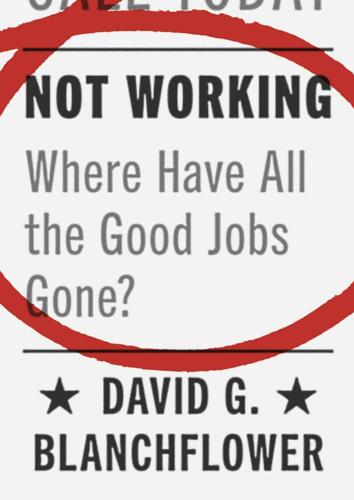
Not Working: Where Have All the Good Jobs Gone?
by
David G. Blanchflower
Published 12 Apr 2021
Falk and Zweimüller 2005; Carmichael and Ward 2000, 2001. Chapter 3. Wage Growth and the Lack of It 1. Patrick Gillespie, “American Businesses Can’t Find Workers,” CNN Money, January 17, 2018. 2. Jennifer Levitz, “Perks for Plumbers: Hawaiian Vacations, Craft Beer and ‘a Lot of Zen’: The Tight Job Market Has Forced Plumbing Companies to Offer Silicon Valley—Style Benefits to Keep the Talent Happy,” Wall Street Journal, May 23, 2018. 3. Bureau of Labor Statistics, “Occupational Employment and Wages—May 2017,” https://www.bls.gov/news.release/pdf/ocwage.pdf. 4. Board of Governors of the Federal Reserve System, “The Beige Book,” https://www.federalreserve.gov/monetarypolicy/files/BeigeBook_20181024.pdf. 5.